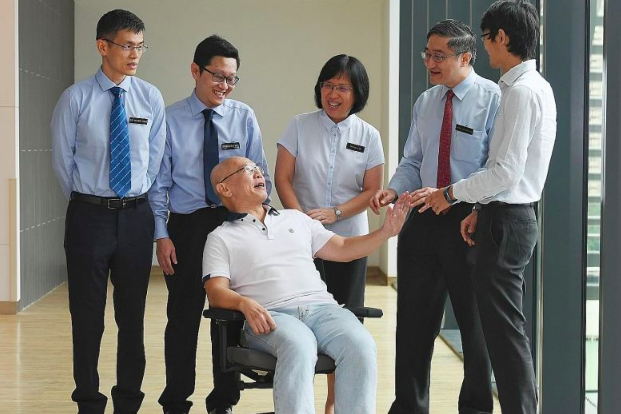Patients with CTEPH have high blood pressure in the lungs, caused by clotting in the blood vessels.
Surgery for the condition is now available and 22 people have undergone the procedures so far
For more than 30 years, Mr Ong Chee Fatt, 57, would keep fit by running 15 times around his block every evening without fail, a distance of about 3km to 4km.
That routine came to an abrupt end in 2010 when he was 49.
"Suddenly, I'd feel breathless. It got so bad that I had to stop after just half a round," Mr Ong said during a media briefing at the National Heart Centre Singapore (NHCS) on Thursday.
He did not know it then, but he had a condition known as chronic thromboembolic pulmonary hypertension (CTEPH). It affects about one in 30,000 people in Singapore.
In November 2016, Mr Ong was one of the first few patients to undergo treatment for the condition as part of a programme being developed at NHCS. The programme is now fully operational and accepting new patients.
Patients with CTEPH have high blood pressure in the lungs, caused by clotting in the blood vessels.
Mr Ong, a senior lecturer who teaches civil engineering at Singapore Polytechnic, was recommended surgery known as pulmonary endarterectomy.
Under this procedure, his body temperature was gradually lowered to 20 deg C to slow down his metabolism. At this temperature, his heart stopped pumping and a machine took over his blood circulation. The machine then completely drained his body of blood, and surgeons had 20 minutes to operate on his lungs to remove the clots.
Without cooling the body, irreversible brain damage would start to set in and other organs would begin to fail in just three minutes.
After the clots were removed, the blood was pumped back into Mr Ong's body and he was returned to a normal temperature.
The procedure was repeated to remove clots in the other side of his lungs. The whole operation lasted about eight hours.
Following his recovery, he went back to his fitness routine. "Before surgery, I had problems walking up the slope to get to this clinic," said Mr Ong, who is married with three children.
But the procedure is not suitable for everyone with this condition.
Mrs Linda Ang, 40, experienced breathlessness when climbing stairs. She was recommended another procedure under the programme, balloon pulmonary angioplasty, as she has a petite frame and a depression in her chest.
This procedure is more suitable for clots in smaller blood vessels, which surgeons may not be able to reach directly, said Associate Professor Lim Soo Teik, a senior consultant and deputy medical director at NHCS.
Under this procedure, a catheter was passed through a blood vessel in Mrs Ang's leg to her lungs. A tiny balloon device was then used to physically push the clot to the side of the blood vessels.
Mrs Ang, a former sales manager, underwent the procedure four times last year.
The two procedures under the programme were not readily available in Singapore previously. So far, a total of 22 people have undergone the procedures.
Prof Lim said: "Due to the non-specific nature of the symptoms and a lack of awareness, many cases go undiagnosed."

Mr Ong Chee Fatt with the team of doctors involved in his treatment and procedures (from left) Asst Professor Victor Chao, senior consultant, Department of Cardiothoracic Surgery (NHCS); Dr Sewa Duu Wen, consultant, Department of Respiratory & Critical Care Medicine (SGH); Asst Prof Tan Ju Le, senior consultant; Assoc Prof Lim Soo Teik, deputy medical director and senior consultant; and Dr Jonathan Yap, associate consultant. Prof Tan, Prof Lim and Dr Yap are from the Department of Cardiology, NHCS. ST PHOTO: KHALID BABA
The Straits Times © Singapore Press Holdings Limited. Permission required for reproduction.
